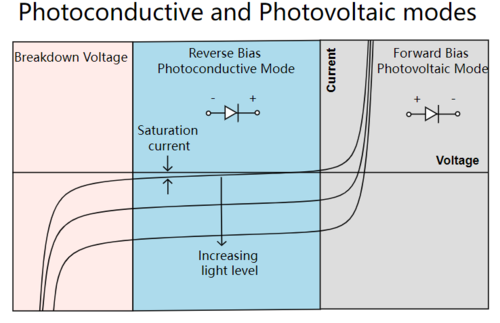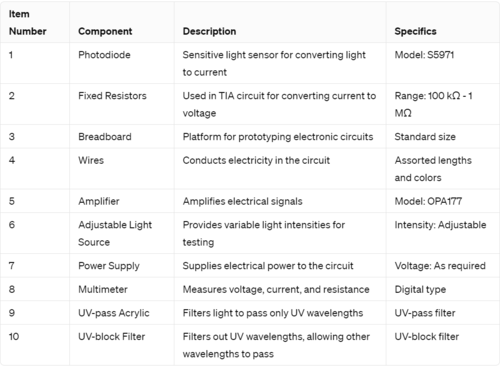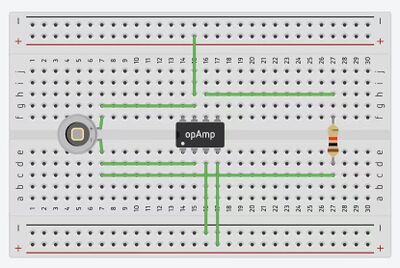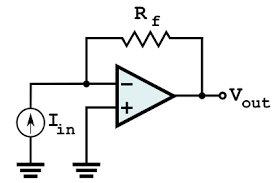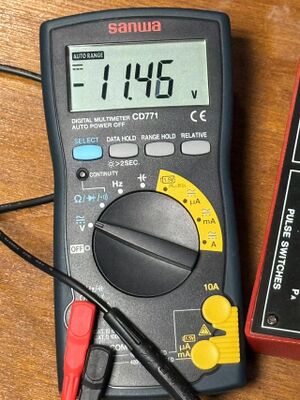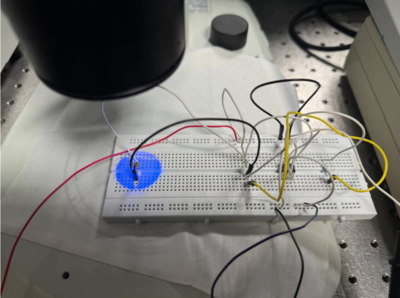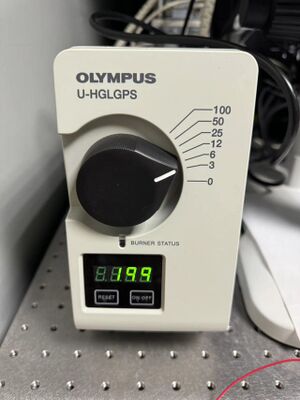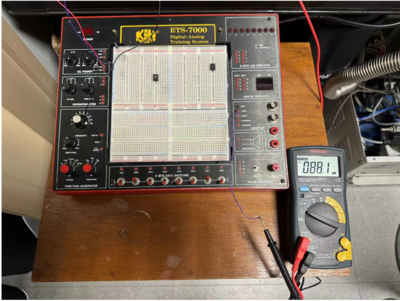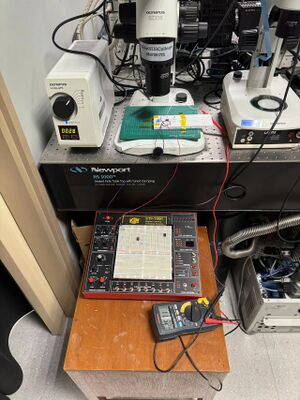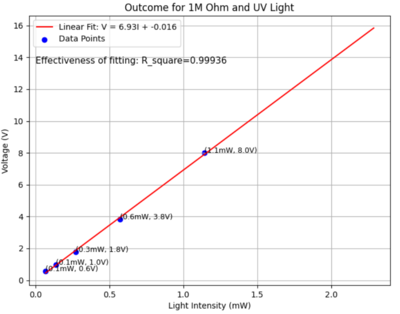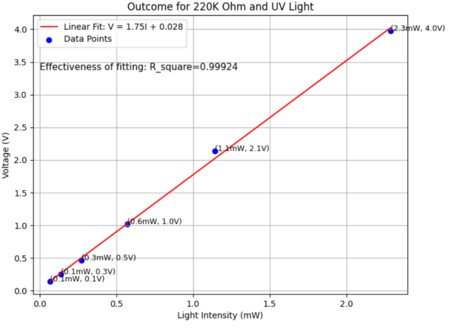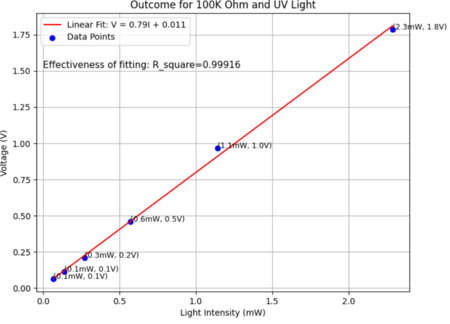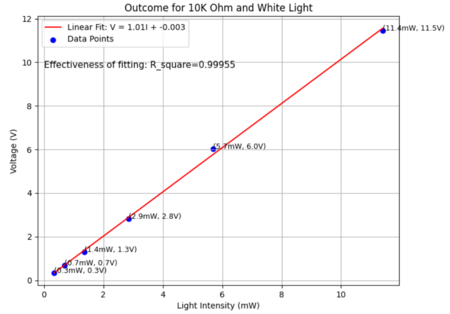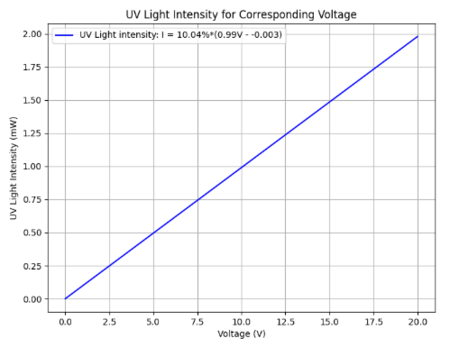Optical Sensor for UV Radiation
Team members
LiJiasheng, ChenXingjian, LiXuejian
Introduction
Ultraviolet (UV) radiation, a fundamental component of sunlight, is critically influential in numerous environmental and biological processes. These processes range from the synthesis of Vitamin D in humans to the degradation of materials exposed to outdoor environments. Monitoring UV radiation is not only essential for assessing its ecological impacts but also for various practical applications including weather forecasting, climate monitoring, and public health advisories against UV overexposure.
Given the significance of accurately measuring UV radiation, the development of reliable and precise UV sensors is of paramount importance. The optical sensor designed in this project utilizes the S5971 photodiode from Hamamatsu, known for its high sensitivity and low noise characteristics, making it an excellent choice for precision light measurements.
The primary objective of this experiment is to develop an optical sensor that can accurately measure the UV component of sunlight. The S5971 photodiode, although highly sensitive, produces only minimal photocurrent under indoor lighting conditions, necessitating the use of a Transimpedance Amplifier (TIA) circuit to convert this small current into a measurable voltage.The designed sensor system integrates the S5971 photodiode with a TIA circuit to amplify the weak signals produced when exposed to light sources. By measuring the voltage across the resistor in the TIA circuit, the amplified voltage corresponding to the intensity of incident light can be determined. This setup allows for the derivation of a quantitative relationship between light intensity and output voltage.
To specifically measure UV light intensity, the sensor system is tested under various conditions: with direct white light (representing broad-spectrum sunlight) and white light passed through a UV-pass filter. By comparing these measurements, the proportion of UV light in natural sunlight can be inferred, providing valuable data for environmental and health-related applications.
This project not only aims to develop a functional UV light sensor but also to enhance understanding of UV radiation's variability with daily and seasonal changes in sunlight exposure. This knowledge is crucial for applications ranging from solar power generation to environmental science studies and public health initiatives.
Principle of Reverse Biasing in Photodiodes
1.Enhanced Sensitivity and Stability
Reverse Biasing:
In a reverse-biased setup, the photodiode is connected such that the anode is connected to a more negative voltage relative to the cathode. This configuration widens the depletion zone of the diode, which is the region devoid of charge carriers (electrons and holes).
Depletion Zone Expansion:
The expansion of the depletion zone reduces the capacitance of the diode, allowing faster response times to changes in light intensity. A larger depletion zone can also improve the sensitivity of the photodiode by increasing the volume in which light-induced electron-hole pairs are generated.
- Figure 1.Principle of Reverse Biasing in Photodiodes
2.Stable Current Response
Linear Response to Light:
Under reverse bias, the photocurrent (current produced when the diode is exposed to light) is more stable and linear in relation to the light intensity. This stability is due to the minimization of recombination of electron-hole pairs within the depletion zone, meaning more of these pairs contribute to the current.
Low Dark Current:
Reverse biasing also minimizes the dark current (the small current that flows through the photodiode even in the absence of light) which is essential for accurate light measurement. Dark current is primarily due to thermally generated carriers that are swept across the junction by the reverse bias; the higher the reverse voltage, the lower the dark current, up to a certain limit beyond which the diode may break down.
Equipment Needed
Experimental Set-up
To set up the UV intensity measurement experiment using the S5971 photodiode, begin by assembling the circuit on a standard-sized breadboard.
- Figure 2.Breadboard schematic of the circuit.
Connect the S5971 photodiode and the OPA177 amplifier, using wires to complete the connections. Install a series of fixed resistors ranging from 100 kΩ to 1 MΩ between the amplifier's output and the ground to adjust the Transimpedance Amplifier (TIA) gain based on the expected light intensity.
- Figure 3.TIA circuit.
Position an adjustable light source so that it directly illuminates the photodiode, and use the UV-pass acrylic filter to isolate UV wavelengths for specific measurements, and replace it with the UV-block filter for measuring other wavelengths.
- Figure 4.The multimeter. Figure 5.The UV source.
Connect the power supply to the breadboard to power the circuit, and use a multimeter set to voltage measurement mode to read the output from the amplifier circuit, which is proportional to the light intensity hitting the photodiode.
- Figure 6.The light source. Figure 7.The power supply. Figure 8.The whole set-up.
This setup allows for precise adjustments and filtering to measure UV light intensity accurately under variable light conditions.
Results and Discussion
1.Outcome for UV Light
First, we choose a special filter to screen white light into UV light and expose our optical sensor to this UV light to get the relationships showing below:
(1) Outcome for Resistance of 1MΩ (2) Outcome for Resistance of 220KΩ
- Figure 9.Outcome for lMΩ and UV Light. Figure 10.Outcome for 220kΩ and UV Light.
(3) Outcome for Resistance of 100kΩ
- Figure 11.Outcome for l00kΩ and UV Light.
2.Outcome of White Light
- Figure 12.Outcome for 10k Ohm and White Light.
To detect the proportion of UV light intensity in white light, we use a filter to screen the UV parts and compare its intensity to the one not using filter. The reason we utilize the filter screening the UV part is that the filter which can leave UV part is difficult to produce. Here is the result for the comparison for white light and white light screening UV part:
Average amount is 10.04 %
So finally, we can get this transformation relationship of ‘Voltage’ to ‘UV Light Intensity’:
- Figure 13.UV Light intensity for Corresponding Voltage.
Conclusion
The development and testing of the optical sensor using the S5971 photodiode have successfully demonstrated the sensor's ability to measure UV light intensity effectively. Through the application of a Transimpedance Amplifier (TIA) circuit, the project achieved precise conversion of photocurrents into measurable voltage outputs, which reflect the intensity of incident UV light.
The experimental results highlighted the sensor's capacity to discriminate between UV and white light intensities effectively. The application of different resistors in the TIA circuit allowed for a detailed characterization of the sensor's response under varying light conditions, with the following specific observations:
1.The sensor's response indicated a direct correlation between the light intensity and output voltage, validating the efficacy of the S5971 photodiode coupled with the TIA circuit in UV detection.
2.The implementation of UV-pass and UV-block filters elucidated the proportion of UV light in natural sunlight, which was quantitatively estimated at approximately 10.04 percent of the total white light intensity.
These findings not only support the reliability of the designed sensor in UV measurement but also underscore its potential utility in broader applications, including environmental monitoring, public health, and climate studies.
Evaluation and Outlooks
Looking forward, the project can be expanded in several ways to enhance the sensor's application scope and operational efficiency:
Integration with Wireless Technology:
Future iterations of the sensor could include integration with IoT devices for real-time data transmission. This would facilitate remote monitoring of UV radiation levels, useful for weather stations and public health advisories.
Miniaturization:
Efforts can be made to miniaturize the sensor design, making it portable for personal use, such as in wearable devices for monitoring UV exposure on the skin.
Broad Spectrum Adaptations:
While this sensor specifically measures UV light, adapting the design to detect other light spectrums can broaden its utility in solar power management and optimizing agricultural growth under controlled light conditions.
Calibration and Validation:
Further research should focus on calibrating the sensor against standard light sources to refine its accuracy and reliability. Additionally, field testing in varied environmental settings would validate its effectiveness across different geographic and climatic conditions.
Material Innovations:
Exploring alternative materials for the photodiode and filters may improve the sensor’s responsiveness and durability, particularly under extreme environmental conditions.
These enhancements will contribute to the development of a versatile, efficient, and reliable sensor system, with extensive applications in ecological assessment, health safety, and climatological research.
